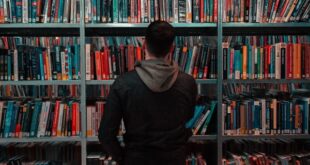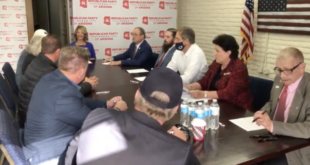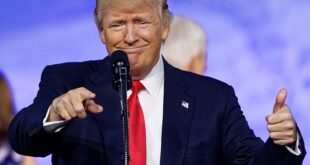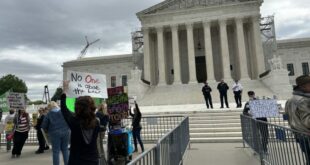The Supreme Court is about to make a decision regarding President Joe Biden’s plan to forgive student loans. If the plan is approved, it could eliminate up to $20,000 in federal student loans for many Americans who earn less than the income threshold set by the plan. Some borrowers may receive these benefits automatically, even without submitting a formal application, if the Education Department already has their income information from 2020 or 2021.
Based on the oral arguments earlier this year, the Court might strike down Biden’s student debt relief plan. However, there are other initiatives in place for student loan forgiveness, including some that provide automatic relief. Although these programs are not as extensive as Biden’s plan, they will still impact hundreds of thousands, if not millions, of borrowers.
Let’s take a closer look at these programs.
Automatic Student Loan Forgiveness through One-Time Account Adjustment
Apart from the plan under review by the Supreme Court, one of the significant student debt relief initiatives by the Biden administration is the IDR Account Adjustment. This program offers a one-time credit adjustment towards a borrower’s student loan forgiveness term under income-driven repayment plans, which typically last for 20 or 25 years, depending on the plan and the type of federal student loans a borrower has. The Education Department can consider past repayment periods, deferment, forbearance, and even default as part of the borrower’s loan forgiveness term.
Millions of borrowers with federal student loans held by the government, including all Direct-program loans, will automatically benefit from the IDR Account Adjustment, even if they are not currently on an income-driven plan. According to the Education Department’s updated guidance, “Any borrowers with loans that have accumulated eligible time in repayment of at least 20 or 25 years will see automatic forgiveness, even if they are not currently on an IDR plan.”
Some borrowers may need to take additional steps to benefit from this program. For instance, borrowers with commercially-held FFEL loans would need to consolidate their loans through the federal Direct consolidation program before the end of the year. Other borrowers may also consider Direct loan consolidation to maximize the benefits of the adjustment. Those who receive significant retroactive credit but fall short of the forgiveness threshold and are not currently on an IDR plan may want to switch to one to continue making progress.
The Education Department states that some borrowers may start receiving automatic student loan forgiveness through the IDR Account Adjustment as early as August.
Automatic Student Loan Forgiveness through PSLF
The Education Department is currently implementing the Limited PSLF Waiver, a temporary initiative that relaxes the rules for the Public Service Loan Forgiveness program. This program is popular among borrowers working for nonprofit and government organizations.
For borrowers who have already certified their employment, the Biden administration automatically updates PSLF payment counts to include past repayment periods, deferment, and forbearance that may not have been counted otherwise. So far, over 450,000 borrowers have received student loan forgiveness.
The benefits of the Limited PSLF Waiver are extended through the IDR Account Adjustment. The retroactive credit received under this program can count towards student loan forgiveness under both IDR and PSLF. To receive automatic credit, borrowers must have Direct federal student loans and must have submitted the required PSLF employment certifications. The Education Department has recently simplified the PSLF certification process to make it easier for borrowers to apply.
Automatic Student Loan Forgiveness for Borrowers Who Attended Closed Schools
The Biden administration is currently implementing another automatic student debt relief initiative for former students of certain for-profit schools that have closed down.
Last year, the administration announced a large-scale automatic student loan forgiveness initiative, providing $6 billion in discharges for over half a million former students of Corinthian Colleges. This chain
of for-profit campuses, including Everest College, Heald College, and Wyotech, collapsed in 2015. The relief is being implemented under the Borrower Defense to Repayment program, which allows student loan discharge for borrowers defrauded by their schools. Even borrowers who did not formally apply can receive this relief.
Last year, a similar initiative was announced for former students of ITT Technical Institutes, another now-defunct for-profit school chain. This initiative will provide $4 billion in student loan forgiveness for over 200,000 former ITT students.
Both programs are automatic and ongoing, ensuring eligible borrowers continue to receive relief throughout the year.
Automatic Student Loan Forgiveness under Sweet v. Cardona Settlement
Last fall, the Biden administration settled the Sweet v. Cardona class action lawsuit, which had been ongoing for years. This settlement allows hundreds of thousands of borrowers who submitted Borrower Defense to Repayment applications by June 2022 to automatically receive $6 billion in student loan discharges. The Education Department is currently processing loan forgiveness under this settlement on an ongoing basis, with relief expected to continue throughout the year.
Additionally, borrowers who submitted a Borrower Defense application between June and November 2022 and attended schools approved under the settlement will receive a determination within three years. If a timely decision is not received, they may qualify for automatic loan discharges under the settlement.
Automatic Student Loan Discharges for Disabled Borrowers
The Biden administration is working on establishing a data-sharing agreement between the Social Security Administration and the Education Department to identify disabled student loan borrowers who may qualify for the Total and Permanent Disability (TPD) Discharge program. This program offers student debt relief to borrowers with physical or psychological impairments that prevent them from maintaining substantial employment.
Through the data-sharing initiative, over 300,000 borrowers have received $6 billion in automatic student loan forgiveness, as reported by the Education Department. New regulations coming into effect this July will simplify and broaden the criteria for Social Security disability benefits recipients to qualify for the TPD discharge program. This may expand the number of borrowers eligible for automatic debt relief through the program.
 Poli Alert Political & Civics
Poli Alert Political & Civics



